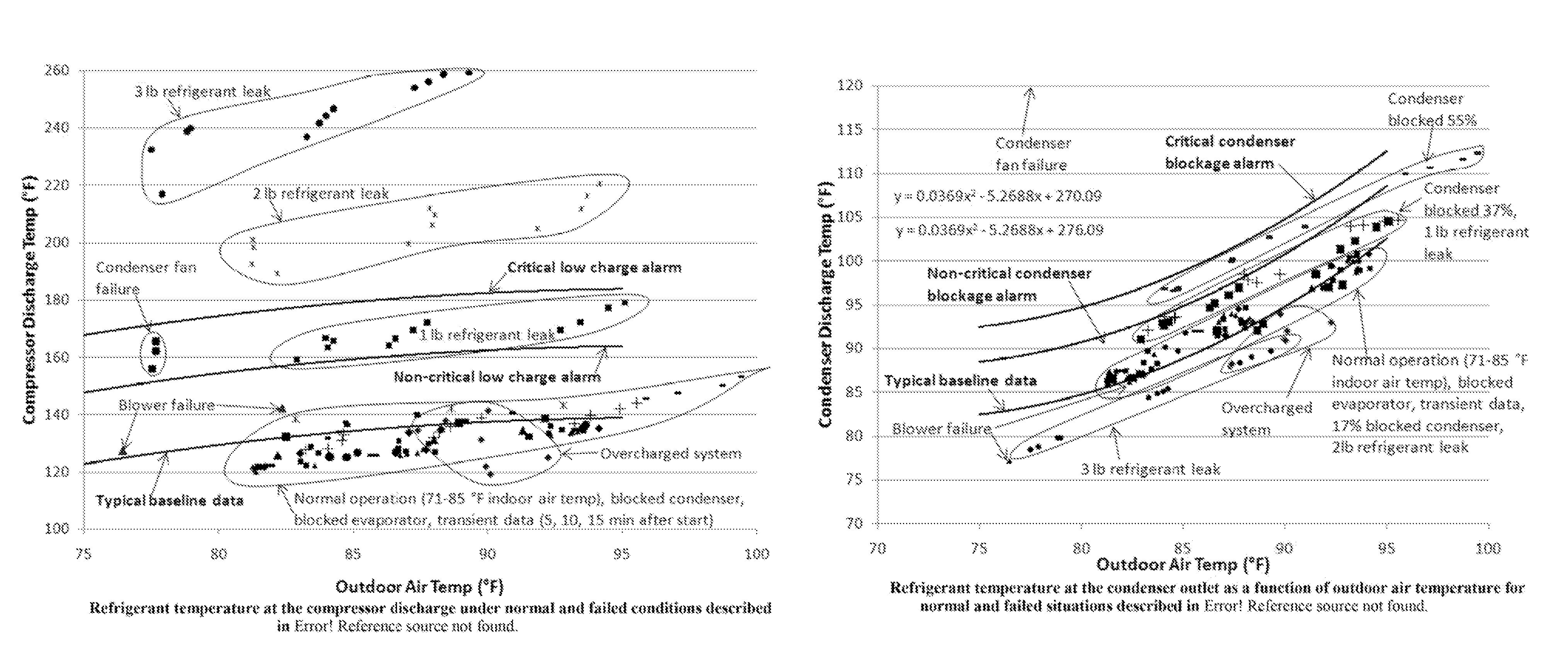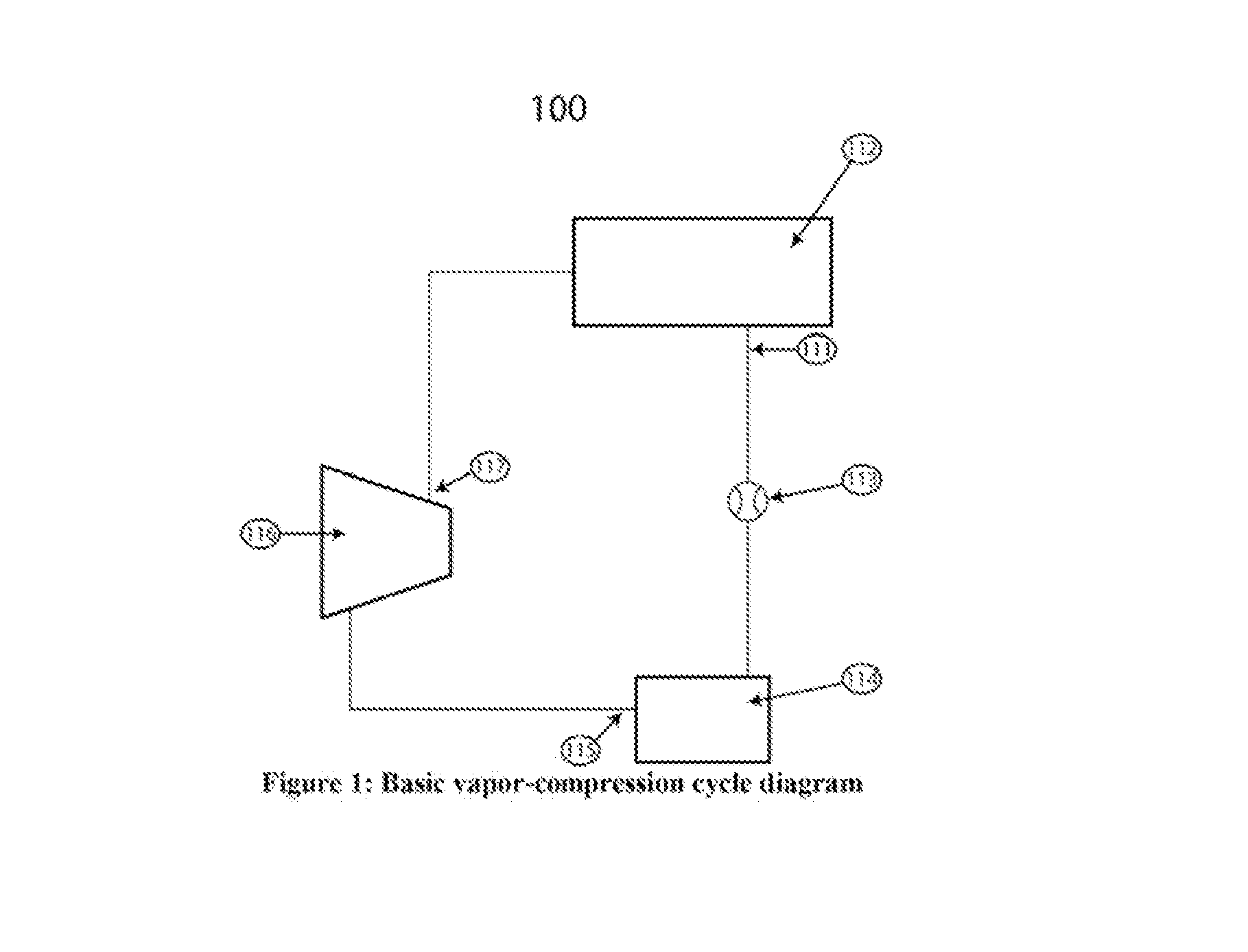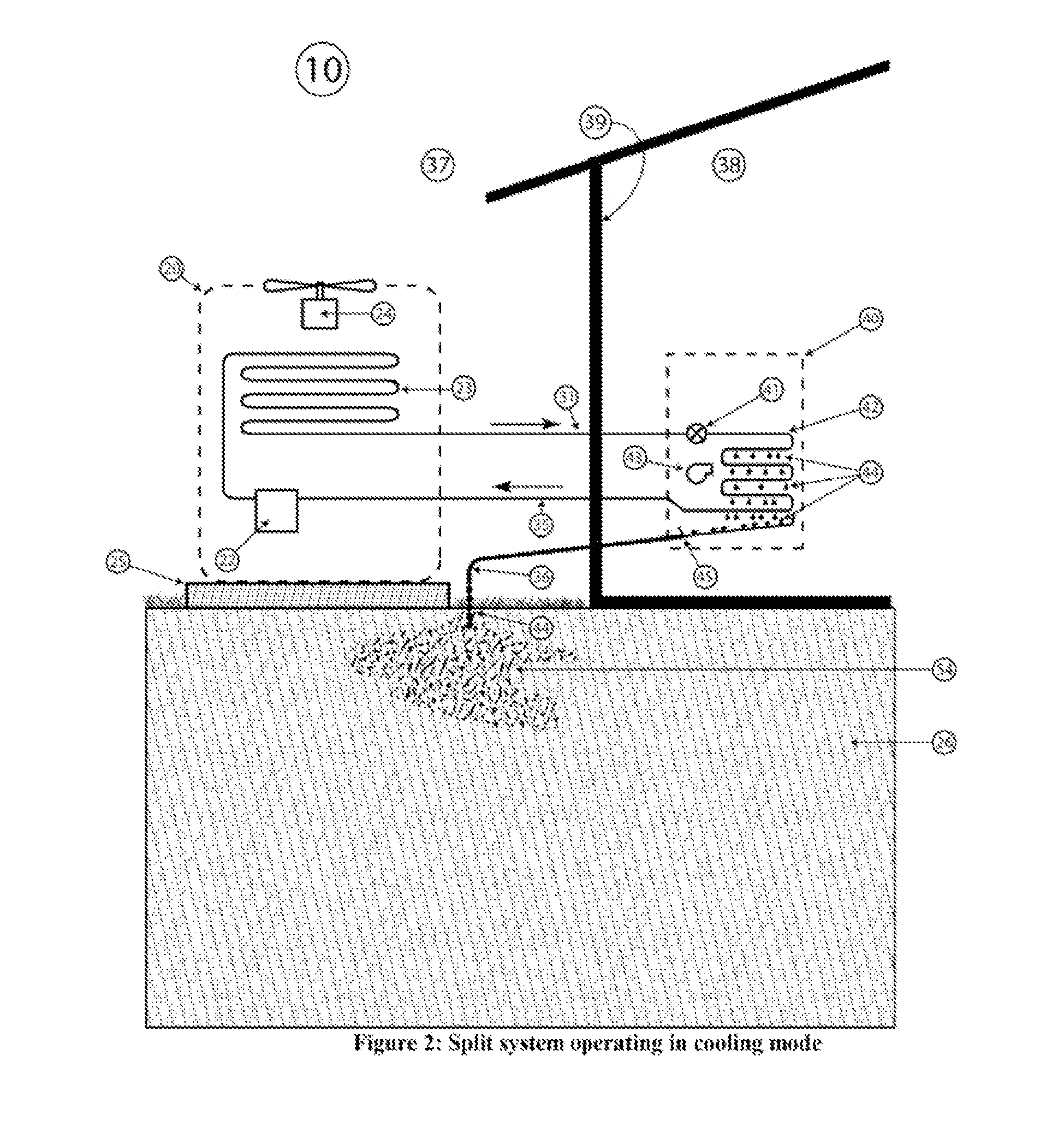Cost-effective remote monitoring, diagnostic and system health prediction system and method for vapor compression and heat pump units based on compressor discharge line temperature sampling
a technology of diagnostic and system health prediction and compressor discharge line, which is applied in the direction of lighting and heating apparatus, instruments, heating types, etc., can solve the problems of equipment owners either failing, increasing energy consumption, and insufficient cooling of living spaces, so as to reduce the cost of monitoring system, eliminate expensive sensors, and improve the effect of cos
- Summary
- Abstract
- Description
- Claims
- Application Information
AI Technical Summary
Benefits of technology
Problems solved by technology
Method used
Image
Examples
example 2
Demonstrating the Capability to Identify Low Run Capacitance
[0096]FIG. 9 shows the variation in winding voltage ratio as a function of current at different run capacitances for a condensing unit. The particular condensing unit used in this example specified a 45 uF run capacitor. The normalized winding voltage ratio of a 45 μF capacitor was used as the baseline data. In this example, the equation for the baseline curve was
Baseline=−0.0004I2−0.15I+1.2203
where I is the current draw of the unit. The current draw used to establish the coefficients of the second order polynomial are determined from initial operating data during the learning process and either the compressor current draw or the current draw of the entire outdoor unit can be utilized as long as the current being measured is consistent. That is the current draw being used to learn must be the same as the current draw used during subsequent monitoring
The non-critical and critical alarm curves are at normalized winding values...
example 4
Experimental Demonstration of the Faulty Condenser Airflow Detection Method
[0102]FIG. 8 displays the baseline, non-critical alarm, and critical alarm curves for condenser blockages which were calculated after baseline data collection. The baseline curve equation in this example is
Baseline=0.0369Tamb2−5.27Tamb+270.10
where Tamb is the outdoor air temperature.
[0103]The non-critical condenser blockage alarm curve and critical condenser blockage alarm curve values are 6° F. and 10° F. greater than the baseline curve y-intercept.
Non-Critical Condenser Air Blockage=Baseline+6
or
Non-Critical Condenser Air Blockage=0.0369Tamb2−5.27Tamb+276.10
Critical Condenser Air Blockage=Baseline+10
or
Critical Condenser Air Blockage=0.0369Tamb2−5.27Tamb+280.10
[0104]FIG. 8 displays the measured values obtained when operating with each of the failure modes identified in Table 1 and how they compare to the thresholds for non-critical and critical arm notifications. As shown in FIG. 8 a condenser coil that is 37...
PUM
| Property | Measurement | Unit |
|---|---|---|
| Current | aaaaa | aaaaa |
| Temperature | aaaaa | aaaaa |
| Flow rate | aaaaa | aaaaa |
Abstract
Description
Claims
Application Information
 Login to View More
Login to View More - R&D
- Intellectual Property
- Life Sciences
- Materials
- Tech Scout
- Unparalleled Data Quality
- Higher Quality Content
- 60% Fewer Hallucinations
Browse by: Latest US Patents, China's latest patents, Technical Efficacy Thesaurus, Application Domain, Technology Topic, Popular Technical Reports.
© 2025 PatSnap. All rights reserved.Legal|Privacy policy|Modern Slavery Act Transparency Statement|Sitemap|About US| Contact US: help@patsnap.com



